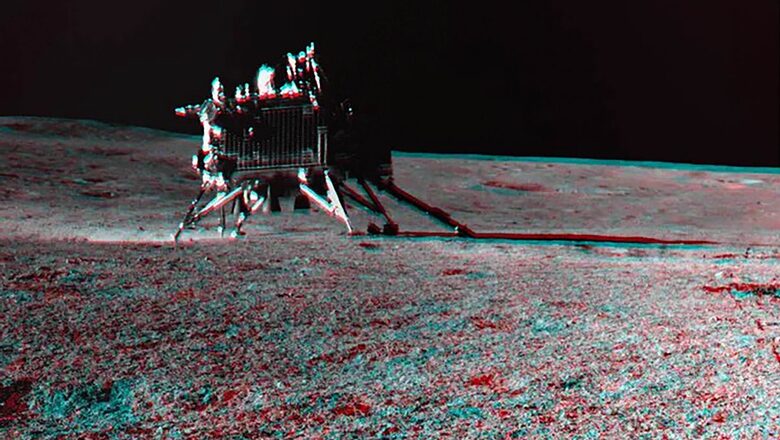
views
The NASA said it has successfully transmitted and reflected a laser beam between its Lunar Reconnaisance Orbiter and the Chandrayaan-3’s Vikram lander for the first time on the moon. This instrument has started serving as a location marker near the lunar south pole, the ISRO said on Friday.
The national space agency said the Laser Retroreflector Array (LRA) on the Chandrayaan-3 lander has started serving as a fiducial point (precisely located markers for reference) on the moon. “The ranging utilised the Lunar Orbiter Laser Altimeter (LOLA) on the LRO. The observation occurred during lunar night time, with the LRO ascending to the east of Chandrayaan-3,” ISRO said.
US space agency NASA’s Lunar Reconnaissance Orbiter (LRO) achieved a laser range measurement using the LRA by successfully detecting signals reflected by it on December 12, 2023. “At 3 pm EST on December 12, 2023, NASA’s LRO pointed its laser altimeter instrument toward Vikram. The lander was 62 miles, or 100 kilometers, away from LRO, near Manzinus crater in the moon’s south pole region, when LRO transmitted laser pulses toward it. After the orbiter registered light that had bounced back from a tiny NASA retroreflector aboard Vikram, NASA scientists knew their technique had finally worked,” NASA was quoted in a report published by The Hindu.
These measurements, apart from aiding in precise determination of spacecraft’s orbital position, will help refine the lunar geodetic frame, revealing insights into the Moon’s dynamics, internal structure, and gravitational anomalies, ISRO said.
NASA’s LRA was accommodated on the Chandrayaan-3 Vikram lander under international collaboration. It comprises eight corner-cube retroreflectors on a hemispherical support structure. This array facilitates lasers ranging from various directions by any orbiting spacecraft with suitable instruments.
The passive optical instrument, weighing about 20 gm, is designed to last for decades on the lunar surface. Landed near the lunar south pole on August 23, 2023, Chandrayaan-3’s Vikram lander has been accessible for LOLA measurements since, ISRO said.
While several LRAs have been deployed on the moon since the beginning of lunar exploration, the LRA on Chandrayaan-3 is a miniature version and is the only one available near the south pole currently, the statement said. “NASA’s LRA on Chandrayaan-3’s Vikram lander will continue to serve as a long-term geodetic station and a location marker on the lunar surface, benefitting current and future lunar missions,” ISRO said.
(With PTI inputs)




















Comments
0 comment